Snowy Compost Pile
I finished my compost pile yesterday. It snowed last night. The pile is already warmer than its surroundings and it’s only two days old. The internal temperature of the pile when I took this picture was 60oF, outside it was 29. I learned to build these structured piles from my son Geoff who years ago was a horticultural apprentice on a biodynamic farm. Geoff taught me a lot of practices used by excellent growers who approached gardening using sustainable methods. Well thought out compost is about as sustainable as it gets.
There are lots of recipes for making a layered compost pile, but it’s a simple process. Organic matter, leaves, weeds, plants, food, etc. all will break down and work into soil naturally. A structured pile is just meant to speed up the process and produce a more uniformly composted soil that is easy to work back into the garden. So while I do layers, I don’t get too worried about exact amounts or the depth of the layers. It all turns out to be composted soil, eventually.
Compost Area
In building this pile I’m using up the pile of accumulated organic debris that contains weeds, spent plants, inedible fruits, and all the stuff I collect that can break down when put into the mix. Some wood gets in, but it breaks down so slowly, that its best not to let too much in. I layer soil, garden refuse, household food scraps, and two plants I specifically grow for the compost pile: Russian comfrey (Symphytum uplandica) and Jerusalem artichoke (Helianthus tuberosus).
The comfrey is the dominant green plant in the background. The Jerusalem artichokes are the brown stalks on the right. Growing them in the compost area makes them easily available for the pile and they both are a huge positive for making a better compost.
Jerusalem Artichoke Stalks
The stalks of the Jerusalem artichokes ensure that a lot of air is in the pile.
Comfrey
The comfrey speeds up the breaking down process and adds nutrition.
Kitchen Scraps
Compost can be kind of eewy. Think of decomposing food. I dump all our compostable household refuse into 55 gallon food grade barrels. The barrels have about 25 – ¼” holes drilled in the bottom to make soil contact. Earth worms come into the barrel through these holes.
Aged Kitchen Scraps
When I’ve filled a barrel, I leave it alone for several months and it becomes this brown goop. You can see egg shells which have not yet broken down, although most everything else is well on its way. While it doesn’t smell quite as bad as animal manure, it still really stinks.
Earthworms in Compost
There are already lots of red worms working their way through the sludge and speeding up the breakdown. I’ll work thin layers of this into the pile.
The dirt for soil is from the weed pile. The bottom of the weed pile is always well broken down and actually could be considered composted soil. I plan to cover the pile with a thin coating of straw. That will help it shed water and while not necessary, slows down erosion of the shape.
Finished Compost Pile
The pile ended up to be just over 3 feet tall. The base is 6 by 9 feet. I’m not going to try to figure out the cubic volume, but for my needs, it will be a goodly supply of composted soil.

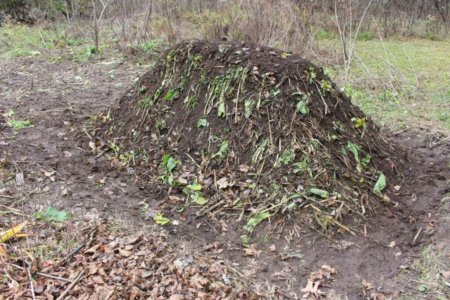
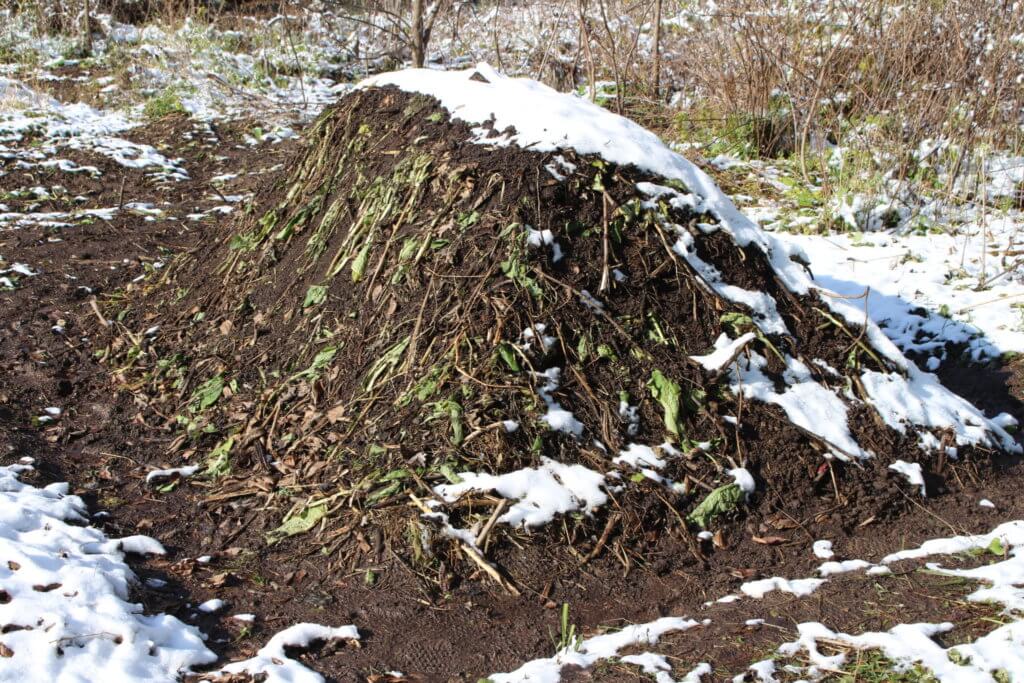
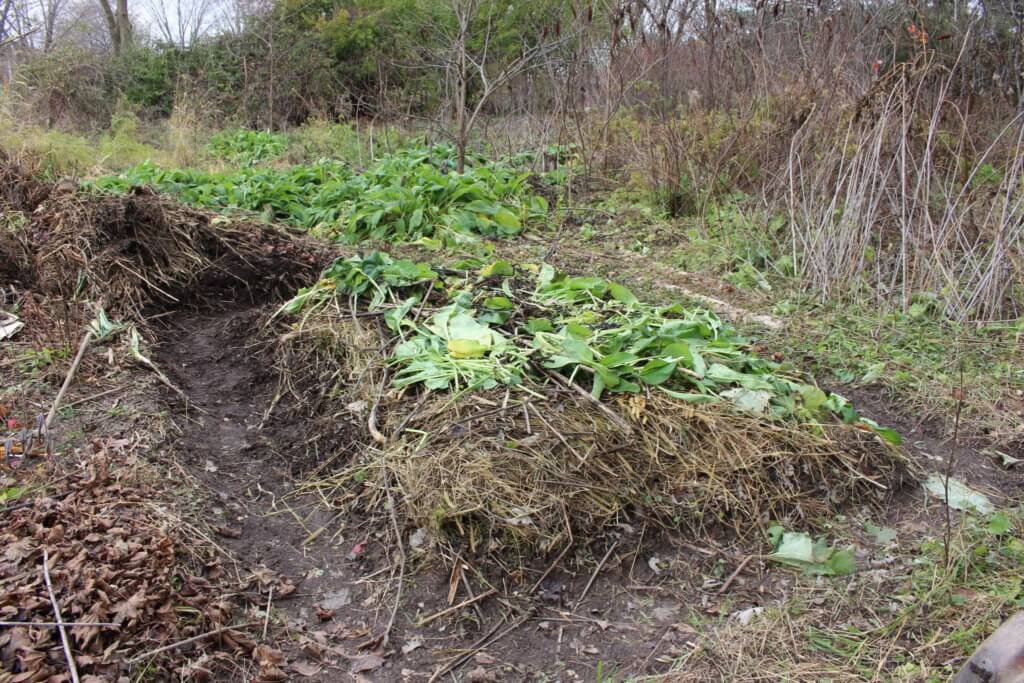
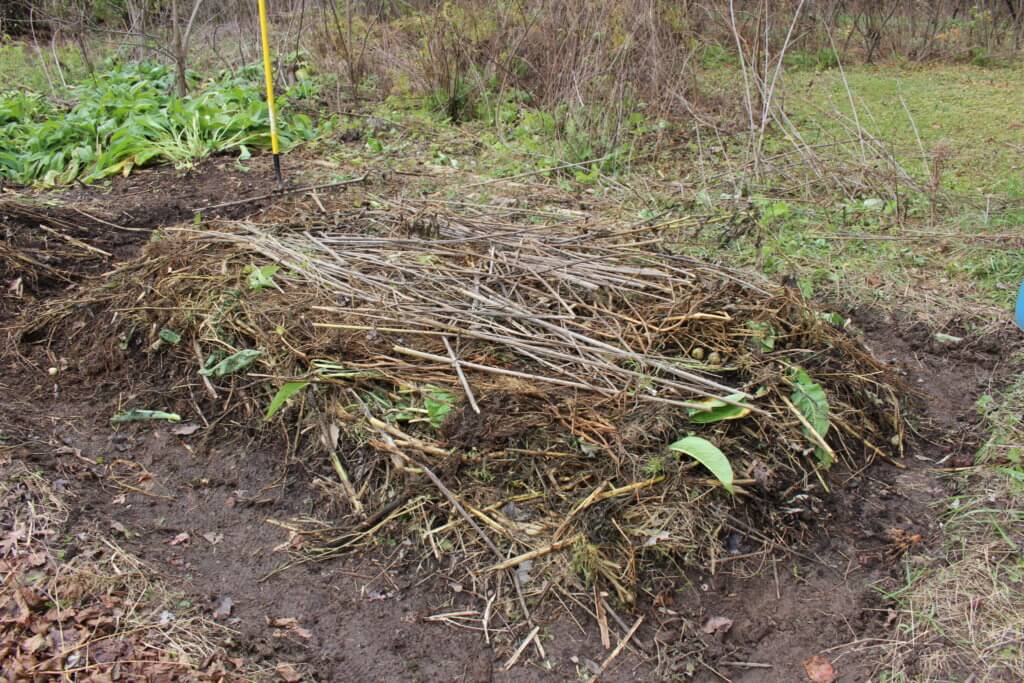
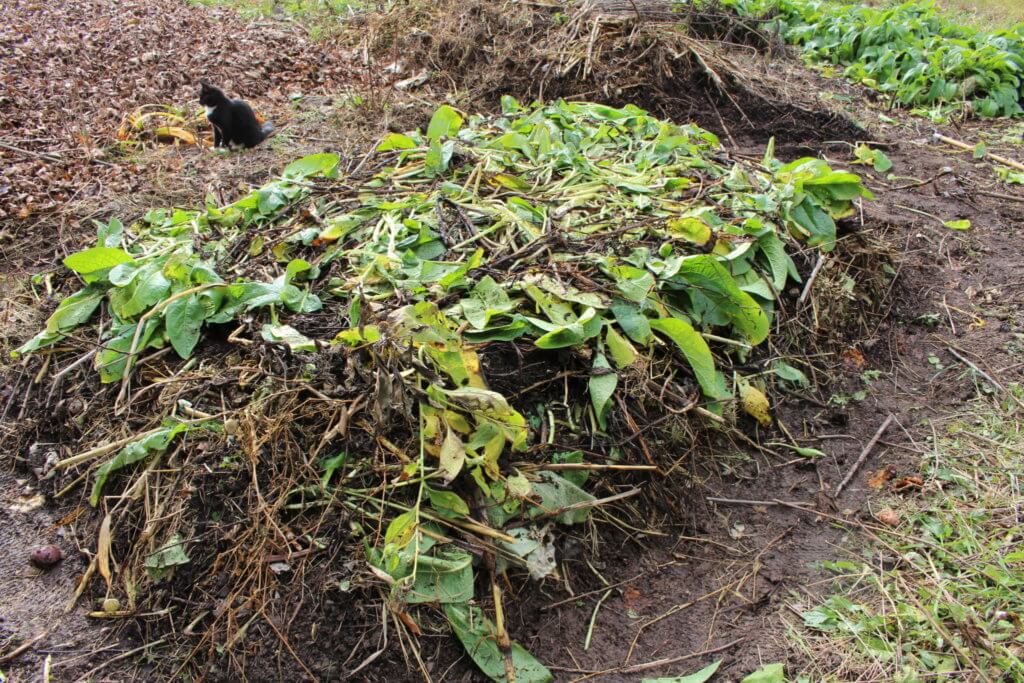
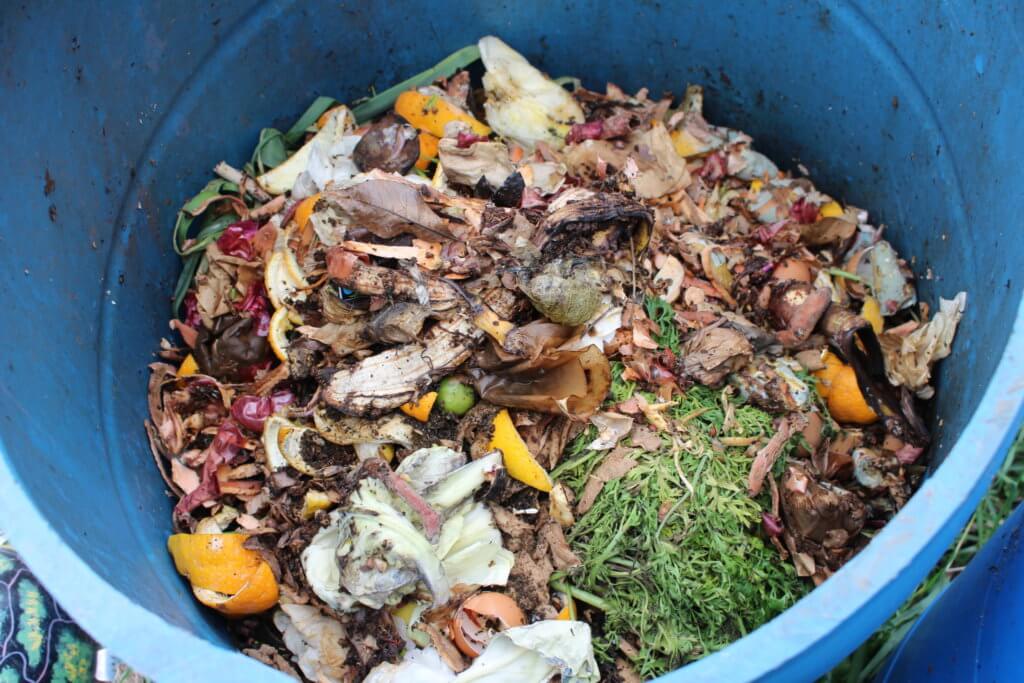
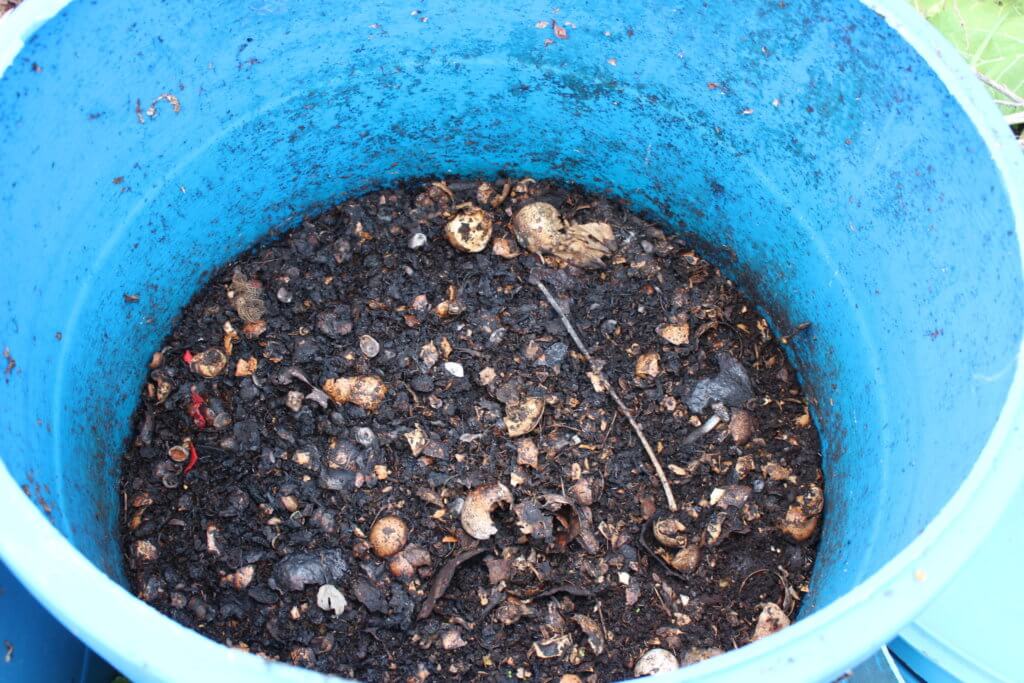
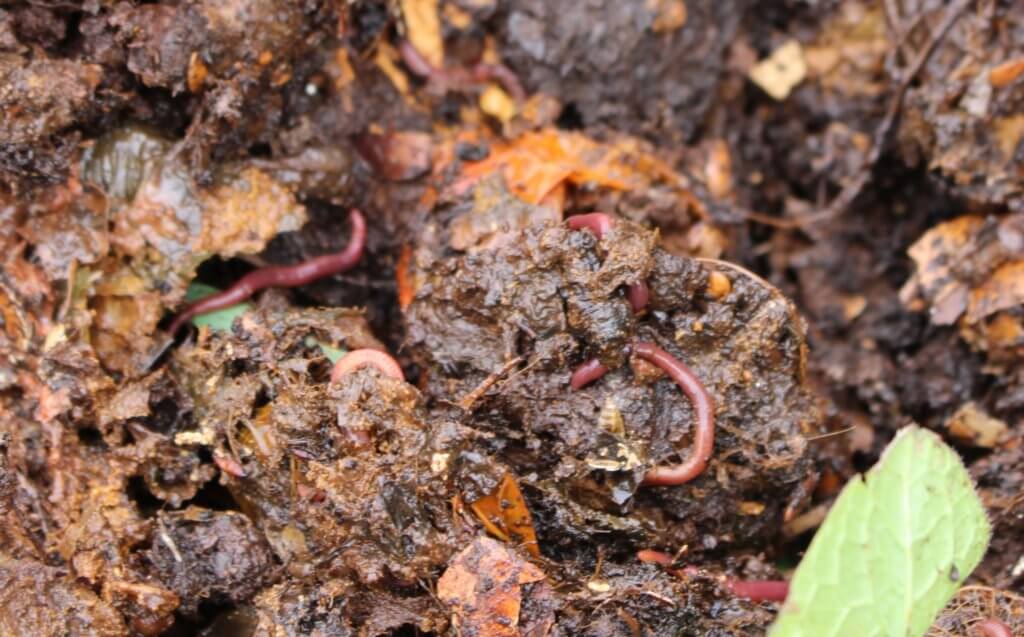
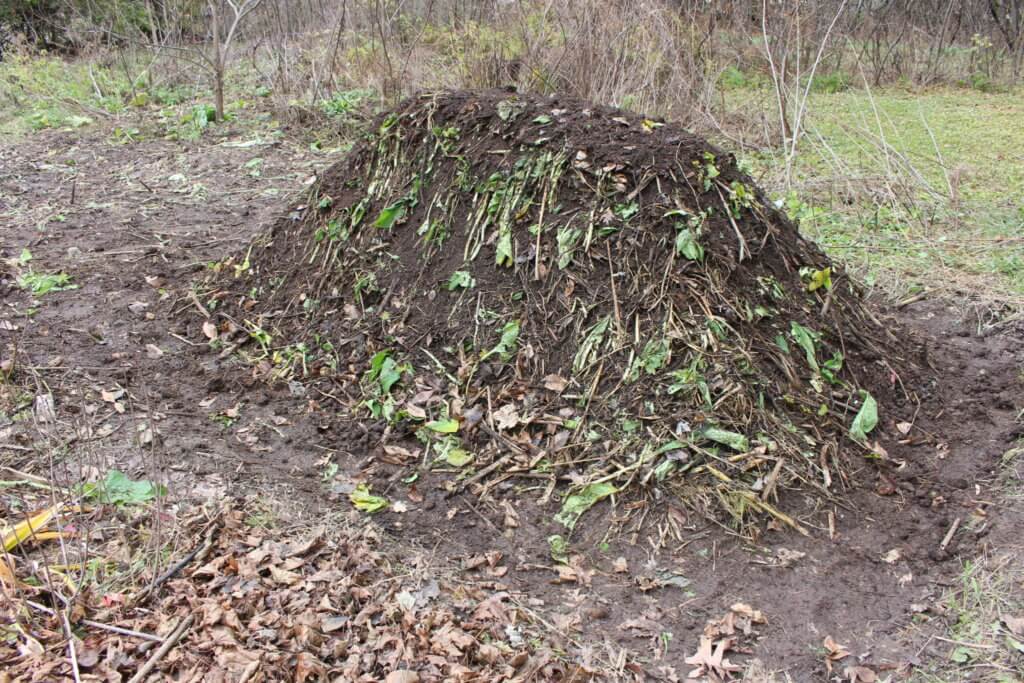
Great information! Thankyou
Very nice Noel……I enjoyed it alot. Thanks
good idea – good advice! Thanks for all you do to improve our environment!